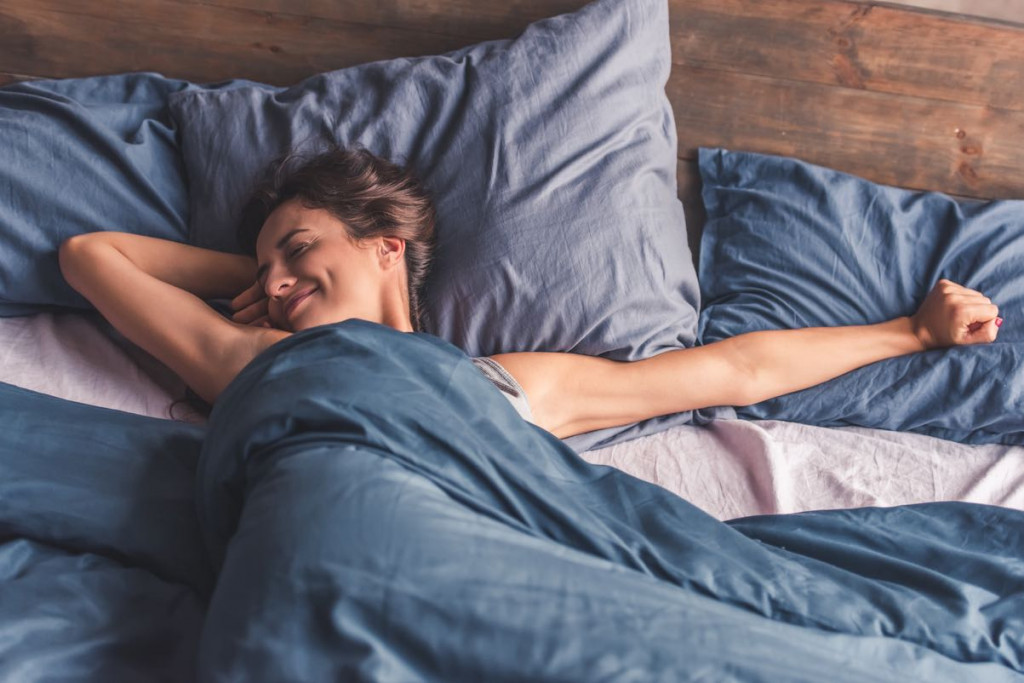How to Make Waking Up on Cold, Dark, Winter Mornings Less Horrible
We asked a doctor from Penn Sleep Centers to give us his tips.

Photograph by iStock/GeorgeRudy
Getting out of bed during the winter should be an Olympic sport. The sheer force of will it takes to leave a warm, cozy bed when it’s still dark outside and your bedroom is freezing deserves some serious accolades.
To find out how to make getting out of bed on such mornings a little less horrible, we reached out to Dr. Charles Bae, a neurologist who works with Penn Sleep Centers. Here are a few of his top tips, no matter what’s keeping you in bed.
For the Motivation: Be Prepared
If you’re lying in bed, thinking about all the things you have to do before you can leave the house — take shower, do hair, pick out outfit, pack lunch, eat breakfast, pack bag, put on coat — it can be downright demotivating to get out of bed. It can also be just plain hard to get through your morning chores when you’re dealing with sleep inertia — a.k.a. you’re not fully alert yet. One of Bae’s first tips, then, is knock some things off that list the night before. “Anything that can save you time in the morning will help out, especially when they’re awake and not alert,” says Bae. “For sleep, we always talk about a bedtime routine, which is important, but I think people should also be focused on a morning routine.”
For the Dark: Create a Fake Sunrise
Thank goodness for technology and the invention of sunrise lamps and smart lightbulbs. Bae suggests setting a dim lamp on a timer to begin lightening your room a half-hour to and hour before you need to wake up. Like a sunrise, these gradual ways of adding light can help make your adjustment from sleeping to waking more smooth. When it comes to sunrise lamps, this one by hOmeLabs on Amazon has five stars and 425 reviews — and it’s only $30! As for smart lightbulbs, which you can use to turn any lamp into a smart lamp that’s controlled by your phone, Bae says he himself owns some of the Philips Hue bulbs.
For the Cold: Program the Thermostat
When you’re snuggled under the covers on a winter morning, having to leave your warm bed for your cold bedroom is almost physically painful. That’s why Bae recommends setting your thermostat to kick on the heat about a half hour to an hour before you wake. While the cold is typically more conducive to sleeping, by presetting your thermostat, you can have the room a few degrees warmer by the time your alarm goes off. While what qualifies as “cold” and what qualifies as “warm” will be different for every person, Bae suggests that if the room is, say, 65 overnight, you can set it to 66 or 67 degrees for the morning.
For the Sleepiness: Know How Much Sleep You Really Need
If your desire to stay in bed is more about chronic sleep deprivation than your love of warm sheets, Bae suggests spending some time figuring out how much sleep you really need. Eight hours, Bae says, is only an average. To find out how much sleep you really need, Bae recommends spending your next leisurely vacation going to sleep when you feel tired and allowing your body to wake up naturally. After a few days, you should be able to pinpoint a pattern of how many hours your body needs. Then, of course, the trick is to actually get that many hours by going to bed on time, so that when the alarm goes off your body isn’t still begging you for more.
Like what you’re reading? Stay in touch with Be Well Philly—here’s how:
- Like Be Well Philly on Facebook
- Follow Be Well Philly on Twitter
- Follow Be Well Philly on Instagram
- Follow Be Well Philly on Pinterest
- Get the Be Well Philly Newsletter


